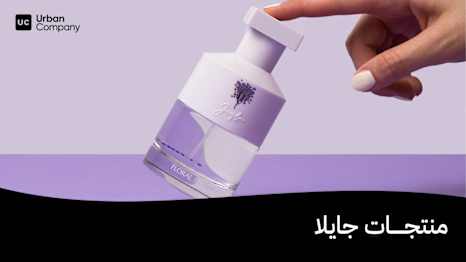
How To Remove Dead Skin From Face

By Urban Company
3 min read
Apr 05, 2024
Give your skin a fresh, smooth start. Removing dead skin from your face is a crucial aspect of any skincare routine. It not only revitalises your skin but also ...

Give your skin a fresh, smooth start.
Removing dead skin from your face is a crucial aspect of any skincare routine. It not only revitalises your skin but also unclogs pores, prevents acne, and enhances the absorption of skincare products, leading to a brighter, healthier complexion. But why does dead skin accumulate, and how can you effectively remove it?
Find out why there’s dead skin build-up and just how effective remedies like Vaseline for peeling skin are as well as delve into the best practices for exfoliation.
Why do I have dead skin on my face?
Dead skin on the face is a natural and continual occurrence. The skin undergoes a constant cycle of cell turnover, where new cells are generated, and old, dead cells are shed. This cycle can be affected by factors such as age, hydration levels, environmental elements, and skincare habits. As we age, the process slows down, leading to accumulation. Environmental factors like sun exposure, dry climates, and pollution can also exacerbate dead skin build-up. Improper skincare, including insufficient hydration and failure to remove makeup, can further impede the natural shedding process.
Is Vaseline good for peeling skin?
Vaseline, a brand of petroleum jelly, is known for its intense moisturising properties. It can be beneficial for peeling skin by creating a protective barrier that locks in moisture and speeds up the skin’s natural healing process. However, while Vaseline helps with hydration, it doesn’t directly remove dead skin. It’s best used to protect and moisturise the area after exfoliating.
How to exfoliate your face
Exfoliation is the key to removing dead skin cells, revealing the fresh, soft skin underneath. There are two main methods of exfoliation: chemical and physical. Your choice should depend on your skin type, sensitivity, and personal preference.
Chemical Exfoliants
Chemical exfoliants work by dissolving the bonds between skin cells, allowing the dead cells to be washed away. They are categorised into two types: AHAs (alpha-hydroxy acids) and BHAs (beta-hydroxy acids).
AHA or BHA Toners and Serums
Alpha-hydroxy acids (AHA)s, like glycolic acid and lactic acid, are water-soluble and work on the surface of the skin, making them suitable for dry and sun-damaged skin. Butylated hydroxyanisoles (BHA)s, such as salicylic acid, are oil-soluble and can penetrate deeper into the pores, ideal for oily and acne-prone skin. Toners and serums containing these acids can be applied after cleansing to gently exfoliate the skin over time.
Overnight Exfoliation
Certain products are designed to work while you sleep, containing a blend of exfoliating acids that rejuvenate the skin overnight. These are applied as part of your night-time routine and washed off in the morning.
Physical Scrubs
Physical scrubs remove dead skin cells through direct friction. They contain small particles or beads that, when massaged into the skin, physically slough away dead cells. While effective, they should be used with caution, especially on sensitive skin, to avoid micro-tears. Opt for scrubs with smooth, round beads rather than harsh, jagged particles and use them no more than once or twice a week. Removing dead skin from your face is essential for maintaining a healthy, glowing complexion. While the build-up of dead skin cells is a natural process, proper exfoliation can prevent clogged pores, acne, and dullness.
Whether you choose chemical exfoliants like AHA or BHA toners and serums, overnight treatments, or physical scrubs, it’s crucial to select a method that aligns with your skin type and concerns. Remember, the goal is to gently remove dead skin cells without damaging the skin. Follow up with a moisturiser like Vaseline to lock in hydration, especially if your skin is peeling. With the right approach, you can achieve smooth, radiant skin that’s free of dead skin build-up.













